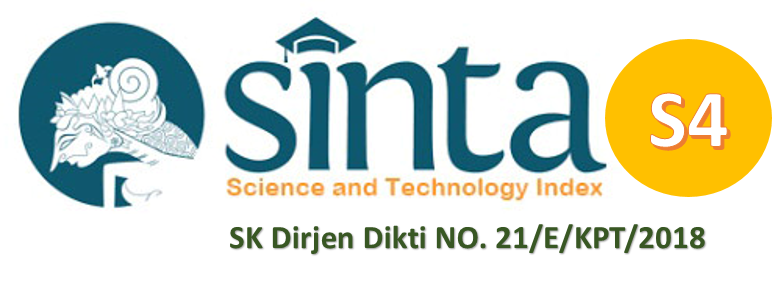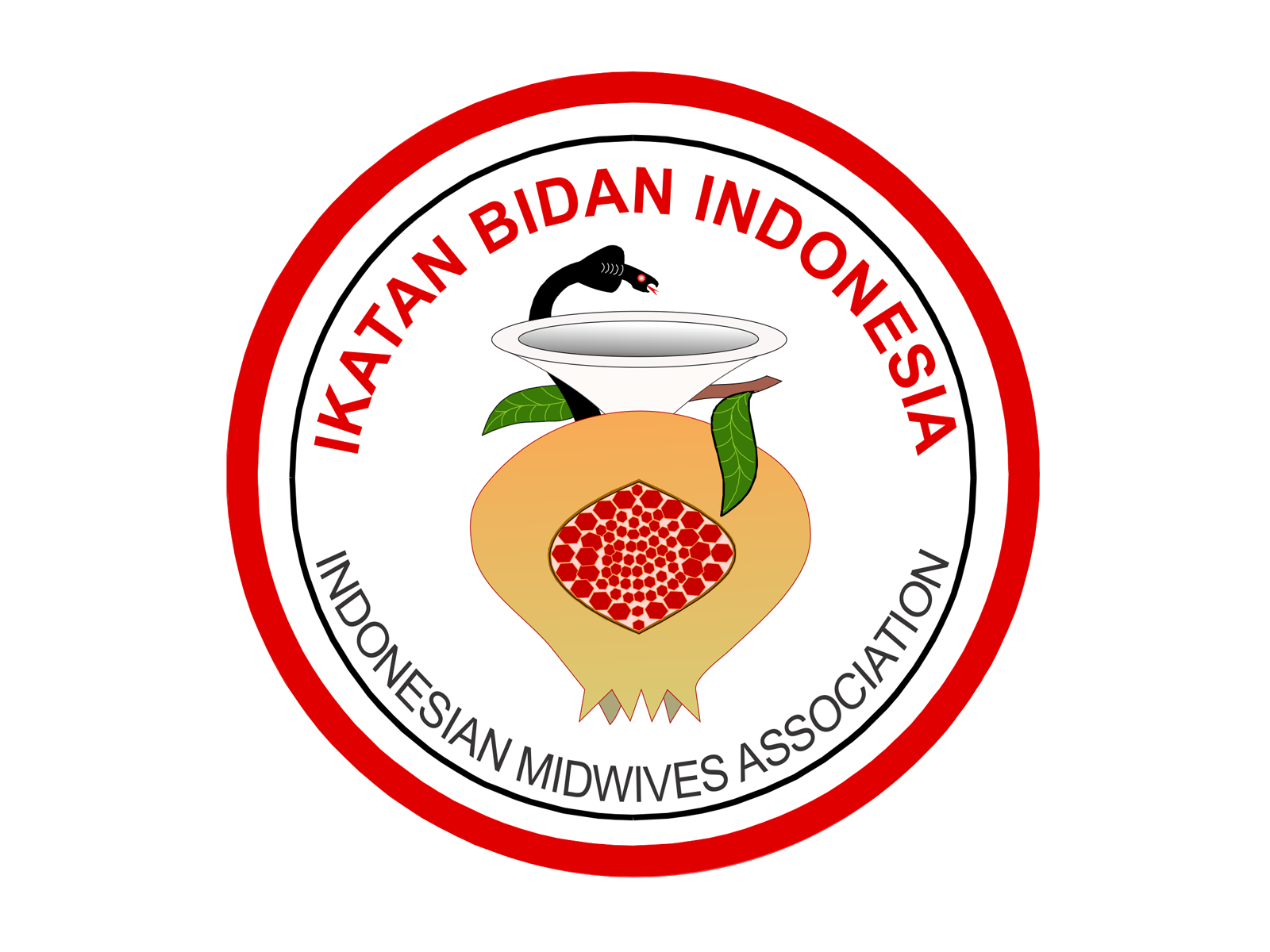PERBEDAAN HASIL SKRINING INSPEKSI VISUAL ASAM ASETAT (IVA) PADA AKSEPTOR PIL ORAL KOMBINASI DAN AKSEPTOR IUD
STUDI DI PUSKESMAS PESANTREN II KOTA KEDIRI
Abstract
Banyak faktor risiko yang dapat menyebabkan terjadinya kanker serviks. Salah satu diantaranya adalah penggunaan kontrasepsi pil oral kombinasi dan IUD yang digunakan lebih dari lima tahun. Perlu adanya deteksi dini untuk pencegahan terjadinya lesi pra kanker salah satunya dengan pemeriksan inspeksi visual asam asetat (IVA). Pemeriksaan IVA merupakan pemeriksaan serviks dengan cara melihat langsung dengan mata telanjang pada serviks setelah memulas dengan larutan asam asetat 3-5%. Tujuan dari penelitian ini adalah untuk mengetahui perbedaan hasil skrining inspeksi visual asam asetat (IVA) pada akseptor pil oral kombinasi dan akseptor IUD di Puskesmas Pesantren II Kota Kediri. Metode penelitian ini menggunakan studi komparatif Non-Eksperimen bentuk Cross Sectional. Sampel dalam penelitian ini adalah 14 responden akseptor pil oral kombinasi lebih dari lima tahun dan 14 responden akseptor IUD lebih dari lima tahun dengan Simple Random Sampling. Alat ukur dalam penelitian ini yaitu kohort KB dan atlas inspeksi visual asam asetat. Dari hasil penelitian didapatkan hasil kurang dari setengah akseptor pil oral kombinasi menunjukkan hasil skrining IVA radang (28,57%). Sedangkan sebagian kecil akseptor IUD menunjukkan hasil skrining IVA negatif (25%). Dari analisis data menggunakan uji Mann-Whitney U-Test didapatkan hasil Sig 2 tailed (0,242) > ά (0,05) maka menolak hipotesis berarti tidak ada perbedaan hasil skrining inspeksi visual asam asetat (IVA) pada akseptor pil oral kombinasi dan akseptor IUD di Puskesmas Pesantren II Kota Kediri Tahun 2013. Pemeriksaan IVA hendaknya menjadi pemeriksaan rutin di pelayanan dasar yaitu di Puskesmas kepada semua wanita yang menjadi faktor risiko sehingga deteksi dini dapat dilakukan dengan baik.
References
2. Anwar, Muchamad. (2011) Ilmu Kandungan Edisi ketiga. Jakarta: PT. Bina Pustaka Sarwono Prawirohardjo
3. Arikunto, Suharsimi. (2010) Prosedur Penelitian Suatu Pendekatan Praktek. Jakarta: Rineka Cipta
4. Bagshaw. The combined oral contraceptive. Risks and adverse effects in perspective. Manager Medical Service. 2009:12(2):91-6
5. Baziad, Ali. (2008). Kontrasepsi Hormonal. Jakarta: YBP-SP
6. BKKBN. (2013) Laporan Pelayanan Kontrasepsi. http://aplikasi.bkkbn.go.id/mdk/MDKReports/KB/. Diakses tanggal 2 Maret 2013
7. Castellsague, Xavier. (2011) Intrauterine device use, cervical infection with human papillomavirus, and risk of cervical cancer: a pooled analysis of 26 epidemiological studies. The Lancet Oncology, Volume 12, Issue 11, Pages 1023 - 1031, October 2011
8. Cibula D, Gompel A, Mueck AO, La Vecchia C, Hannaford PC, Skouby SO, Zikan M, Dusek L. Hormonal contraception and risk of cancer. 2010 Nov-Dec; 16(6):631-50
9. Cunningham, F. Gary. (2009) Obstetry Williams Vol 1 edisi 22. Jakarta: EGC
10. Curtis KM, Marchbanks, Peterson HB. Neoplasia with use of intrauterine devices. Contraception 2007:75(6):60-9
11. Depkes RI. (2009) Buku Saku Pencegahan Kanker Leher Rahim Dan Kanker Payudara
12. ________(2010) Gerakan Perempuan Melawan Kanker Serviks. http://www.depkes.go.id diakses tanggal 21 Februari 2013
13. ________(2012) Kegiatan Dalam Rangka Hari Kanker Sedunia 2013 Di Jawa Timur.http://dinkes. jatimprov.go.id/contentdetail/11/1/275/kegiatan_ dalam_rangka_hari_kanker_sedunia_2013_di_ jawa_timur.html. Diakses tanggal 13 Maret 2013
14. Dinas Kesehatan Jawa Timur. (2012) Kegiatan Pengendalian Kanker di Jawa Timur< http:// dinkes.jatimprov.go.id/contentdetail/11/5/156/ kegiatan_pengendalian_kanker_di_Jawa_timur. html> diakses tanggal 4 Februari 2013
15. Emilia, Ova. Hananta, I putu Yudha. Kusumanita, Dhanu. Freitag LM, Hary. (2010) Bebas Ancaman Kanker Serviks. Yogyakarta: Buku Seru
16. Gant, Norman F. (2011) Dasar-Dasar Ginekologi dan Obstetri. Jakarta: EGC
17. Glasier, Anna. Ailsa. Gebbie (2006) Keluarga Berencana dan Kesehatan Reproduksi. Jakarta: EGC
18. Handayani, Sri. (2010) Buku Ajar Pelayanan Keluarga Berencana. Yogyakarta: Pustaka Rihanna
19. Hidayat, Aziz Alimul. (2008) Riset Keperawatan dan Teknik Penulisan Ilmiah. Jakarta: Salemba Medika
20. Joesoef MR, Karundeng A, Runtupalit C, Moran JS, Lewis JS, Ryan CA. High rate of bacterial vaginosis among women with intrauterine device in Manado, Indonesia. Contraception 2009: 64(3): 169-72
21. Kartikawati, Erni. (2013) Awas!!! Bahaya Kanker Payudara & Kanker Serviks. Bandung: Buku Baru
22. Medforth, Janet. (2012) Kebidanan Oxford dari Bidan untuk Bidan. Jakarta: EGC
23. Notoatmodjo, Soekidjo. (2010) Metodologi Penelitian Kesehatan. Jakarta: Rineka Cipta
24. Nuranna. (2008) Skrining Kanker Leher Rahim Dengan Metode Inspeksi Visual Asam Asetat (IVA). Health Technology Assessment Indonesia Departemen Kesehatan Republik Indonesia
25. Nurwathon, Aulia. (2009) “Faktor yang mempengaruhi terjadinya kanker leher rahim (kanker serviks) di RSUD Prof Dr. Margono Soekarjo Pirwokerto. “Jurnal Kesehatan Masyarakat Indonesia Volume 2. Elex Media Komputindo.
26. Nurwijaya, Hartati. (2010) Cegah dan Deteksi Kanker Serviks. Jakarta: PT. Elex Media Komputindo
27. Pinem, Saroha. (2009) Kesehatan Reproduksi dan Kontrasepsi. Jakarta: Trans Media Info
28. Pratiwi, Muthiah Rissa. (2009) Pengaruh Alat Kontrasepsi Kombinasi Progesteron Estrogen Terhadap Kejadian Kanker Leher Rahim Di RSUD dr. Moewardi Surakarta
29. Prawirohardjo, Sarwono. (2009) Onkologi dan Ginekologi. Yogyakarta: Yayasan Bina Pustaka Sarwono Prawirohardjo
30. _____(2011) Ilmu Kandungan. Yogyakarta: Yayasan Bina Pustaka Sarwono Prawirohardjo Rasjidi, Imam. (2010) 100 Question & Answer: Kanker Pada Wanita. Jakarta: PT. Elex Media Komputindo
31. Rifkin SB, Smith MR, Brotman RM, Gindi RM, Erbelding EJ. Hormonal contraception and risk of bacterial vaginosis diagnosis in an observational study of women attending STD clinics in Baltimore, MD. Contraception 2009: 80(1); 63-7
32. Romauli, Suryati. Anna Vida Vindari. (2011) Kesehatan Reproduksi Buat Mahasiswa
Kebidanan. Yogyakarta: Nuha Medika
33. Saepudin, Malik. (2011) Metodologi Penelitian Kesehatan Masyarakat. Jakarta: Trans Info Media
34. Samadi, Heru. Priyanto. (2011). Yes I know Everything About Kanker Serviks Mengenali, Mencegah dan Bagaimana Anda Menjalani Pengobatannya. Jakarta: Tiga Kelana
35. Sari, Wening. Lili Indrawati. Basuki Dwi Harjanto. (2012) Panduan Lengkap Kesehatan Wanita. Jakarta: Penebar Plus
36. Saryono, Ari Setiawan (2011) Metodologi Penelitian Kebidanan DIII, DIV, S1 dan S2. Yogyakarta: Nuha Medika
37. Serfaty D. Vaginal and Intrauterine Contraception. Article in Franch Rev Prat. (2010) Dec:1;45 (19):2407-15
38. Sherris JD, Wells ES, Tsu VD, Bishop A. Cervical cancer in developing countries: a situation analysis. Program for Appropriate Technology in Health (PATH) 2008.
39. Sibagariang, Eva Ellya. (2010) Kesehatan Reproduksi Wanita. Jakarta: Trans Info Media
40. Sopiyudin, Dahlan. (2008) Statistik Untuk Kedokteran dan Kesehatan. Jakarta: Salemba Medika
41. Sugiyono. (2010) Statiska Untuk Penelitian. Bandung: Alfabeta
42. Sulistyawati. (2011) Pelayanan Kontrasepsi dengan Metode Modern. Yogyakarta: Nuha Medika
43. Suryati, Rahayu. Anna Valia. (2009) Kesehatan Reproduksi Wanita. Jakarta: Nuha Medika
44. Tapan, Erik (2009) Kanker, Antioksidan dan Terapi Komplementer. Jakarta: Elex Media Komputindo
45. Veljkovic M, Veljkovic S. The risk of breast cervical, endometrial and ovarian cancer in oral contraceptive users. Med Preggl 2010:63 (9-10):657-61
46. Wijaya, Delia. (2010) Pembunuh Ganas Itu Bernama Kanker Serviks. Yogyakarta: Sinar Kejora
47. Wiknjosastro, Hanifa. (2012) Ilmu Kebidanan Edisi ketiga. Jakarta: PT. Bina Pustaka Sarwono Prawirohardjo
48. World Health Organization. (2008) Comprehensive Cervical Cancer Control. A Guide to Esssential Pratice Geneva: WHO.
Please find the rights and licenses in Jurnal Ilmiah Bidan (JIB). By submitting the article/manuscript of the article, the author(s) agree with this policy. No specific document sign-off is required.
1. License
The non-commercial use of the article will be governed by the Creative Commons Attribution license as currently displayed on Creative Commons Attribution-NonCommercial-ShareAlike 4.0 International License.
2. Author(s)' Warranties
The author warrants that the article is original, written by stated author(s), has not been published before, contains no unlawful statements, does not infringe the rights of others, is subject to copyright that is vested exclusively in the author and free of any third party rights, and that any necessary written permissions to quote from other sources have been obtained by the author(s).
3. User/Public Rights
JIB's spirit is to disseminate articles published are as free as possible. Under the Creative Commons license, JIB permits users to copy, distribute, display, and perform the work for non-commercial purposes only. Users will also need to attribute authors and JIB on distributing works in the journal and other media of publications. Unless otherwise stated, the authors are public entities as soon as their articles got published.
4. Rights of Authors
Authors retain all their rights to the published works, such as (but not limited to) the following rights;
- Copyright and other proprietary rights relating to the article, such as patent rights,
- The right to use the substance of the article in own future works, including lectures and books,
- The right to reproduce the article for own purposes,
- The right to self-archive the article (please read out deposit policy),
- The right to enter into separate, additional contractual arrangements for the non-exclusive distribution of the article's published version (e.g., post it to an institutional repository or publish it in a book), with an acknowledgment of its initial publication in this journal (Jurnal Ilmiah Bidan).
5. Co-Authorship
If the article was jointly prepared by more than one author, any authors submitting the manuscript warrants that he/she has been authorized by all co-authors to be agreed on this copyright and license notice (agreement) on their behalf, and agrees to inform his/her co-authors of the terms of this policy. JIB will not be held liable for anything that may arise due to the author(s) internal dispute. JIB will only communicate with the corresponding author.
6. Royalties
Being an open accessed journal and disseminating articles for free under the Creative Commons license term mentioned, author(s) aware that JIB entitles the author(s) to no royalties or other fees.
7. Miscellaneous
JIB will publish the article (or have it published) in the journal if the article’s editorial process is successfully completed. JIB's editors may modify the article to a style of punctuation, spelling, capitalization, referencing and usage that deems appropriate. The author acknowledges that the article may be published so that it will be publicly accessible and such access will be free of charge for the readers as mentioned in point 3.














